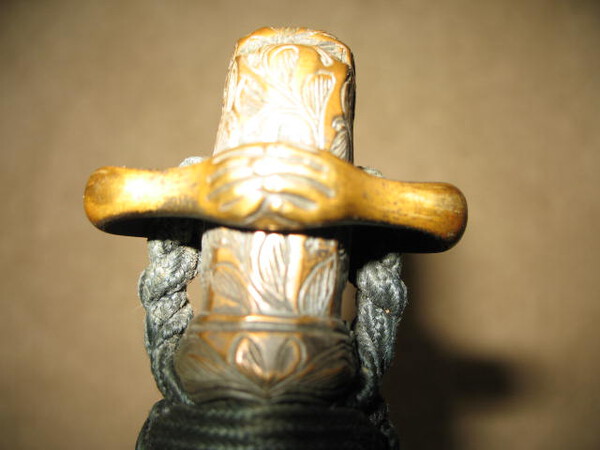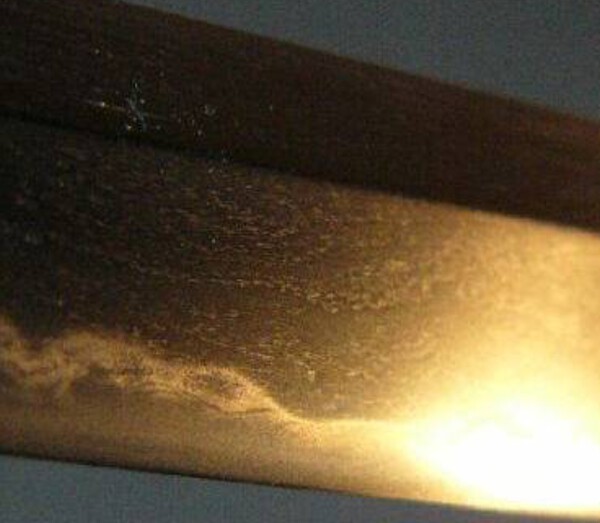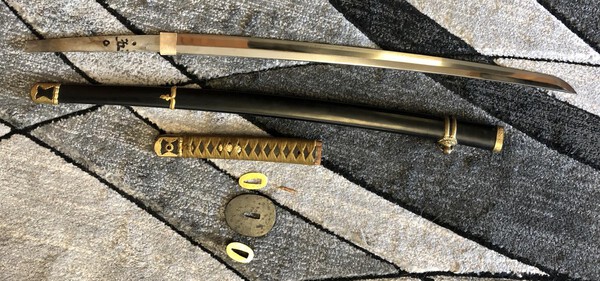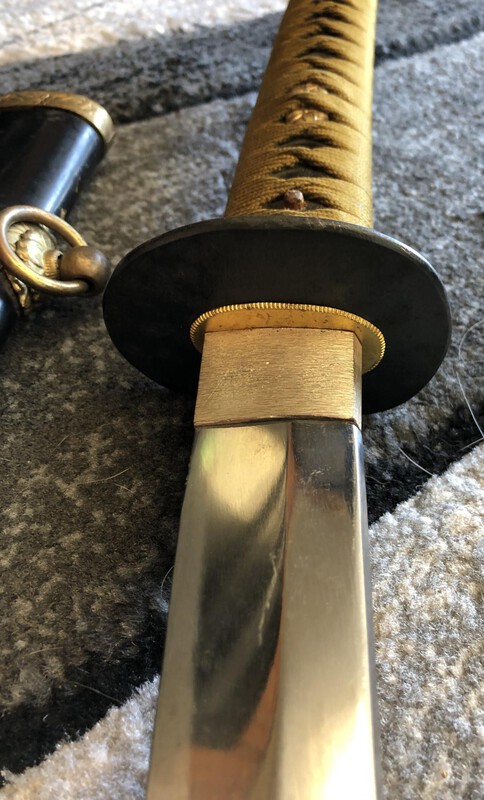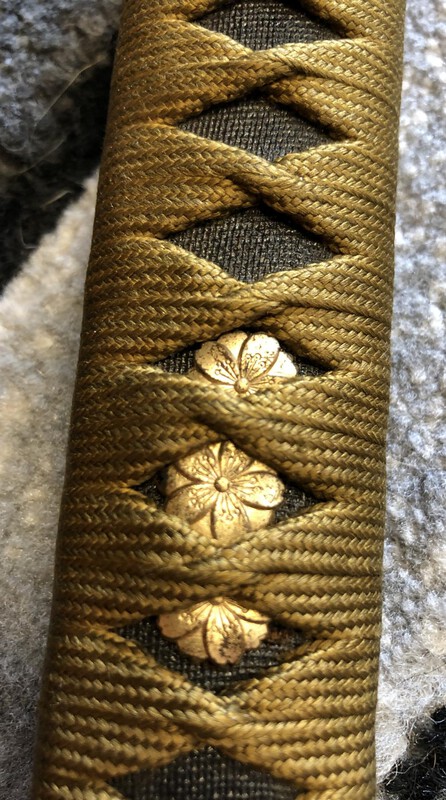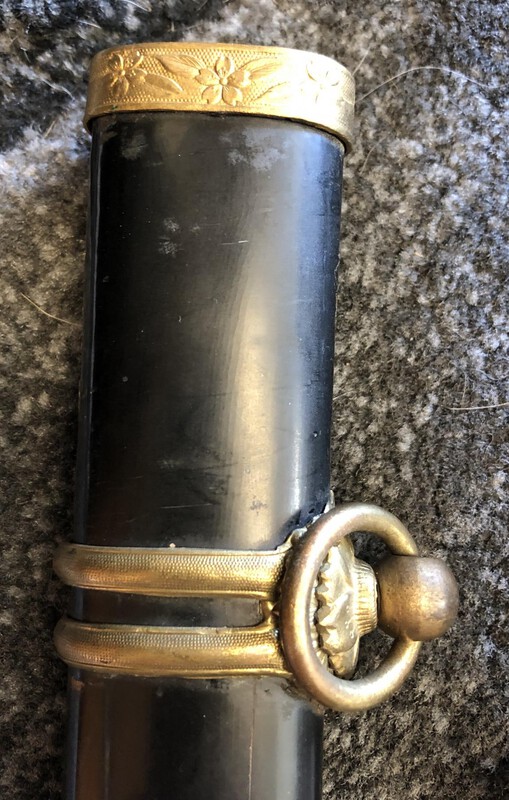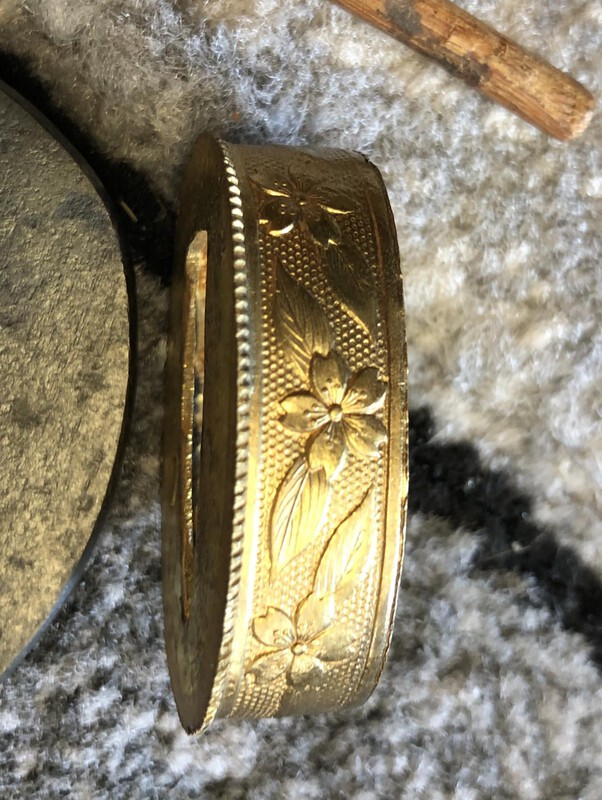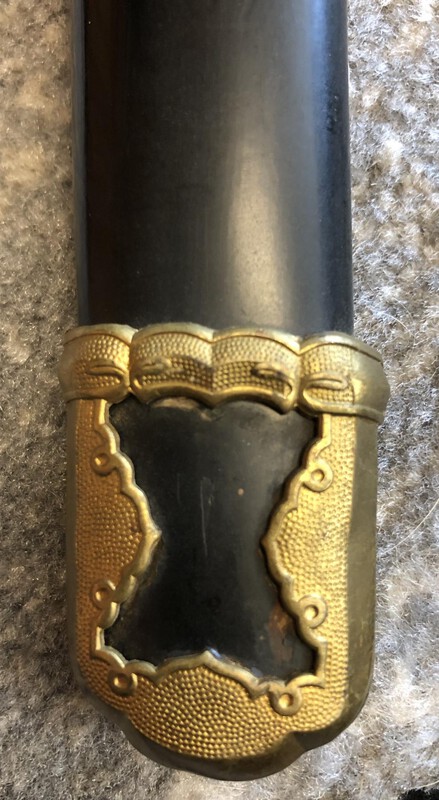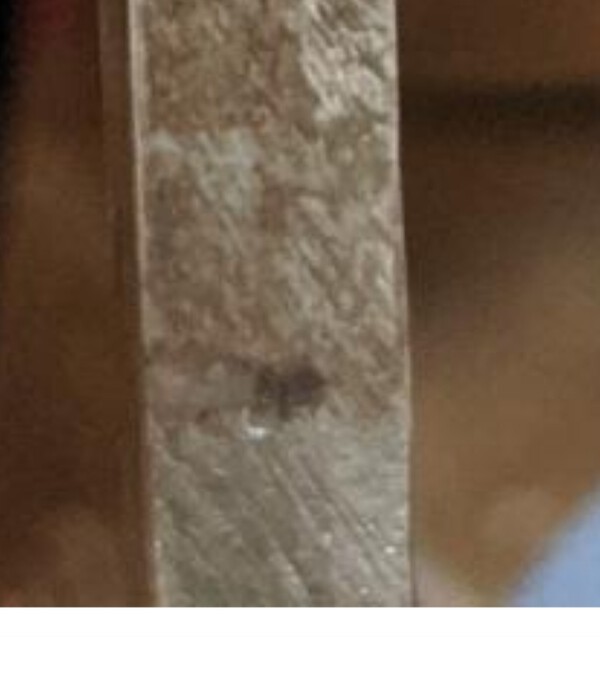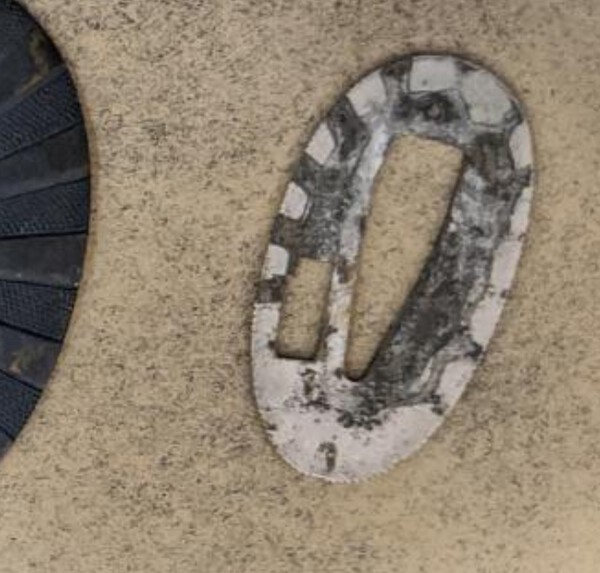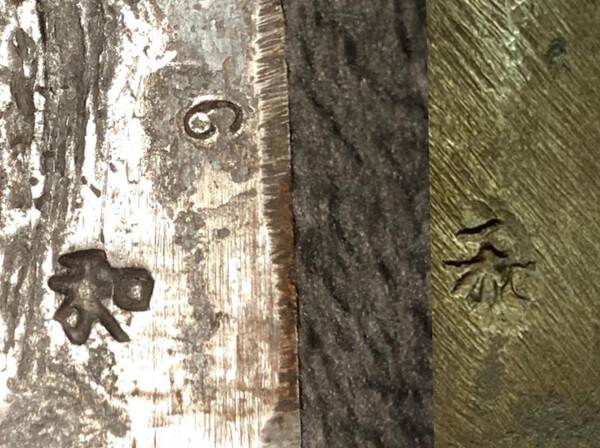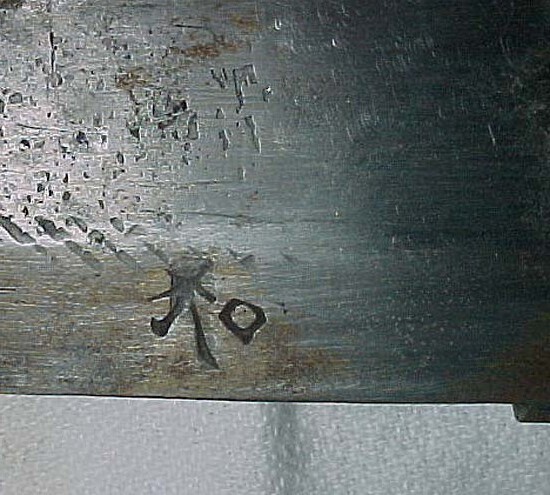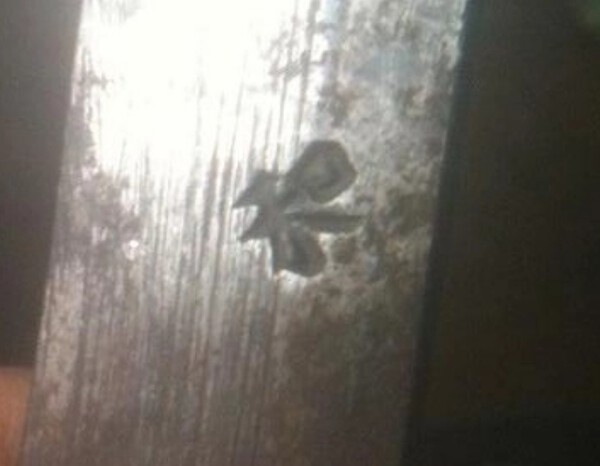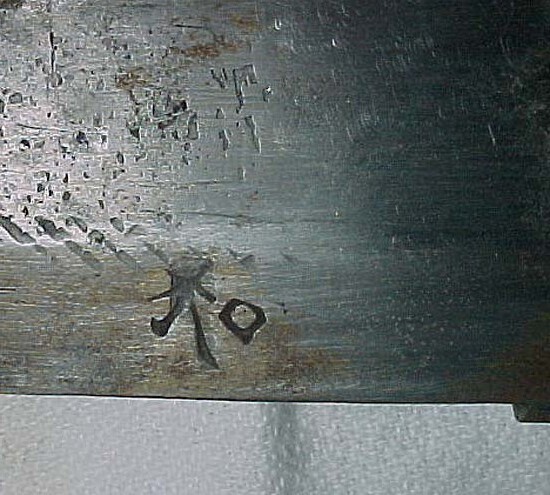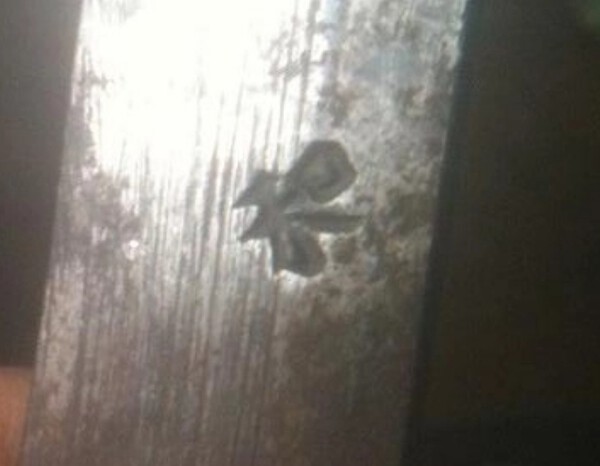-
Posts
13,018 -
Joined
-
Last visited
-
Days Won
155
Content Type
Profiles
Forums
Events
Store
Downloads
Gallery
Everything posted by Bruce Pennington
-

Attention Mantetsu Owners: A Survey
Bruce Pennington replied to Bruce Pennington's topic in Military Swords of Japan
Joe, What kind of fittings is this '38 N408 in? I see it's missing the boar's eye seppa. I just got a '38 in combat saya and it doesn't have those seppa either. -
Both Trystan and John are correct. Fuller says of it: " ‘Tan’ or ‘Kitau’ stamp. Literally ‘to forge’ or ‘forged’. Very scarce." Don't know any more about it than that, though.
-
Have a look at this one: http://www.militaria.co.za/nmb/topic/31696-1943-nanman-mantetsu-real-nice/?do=findComment&comment=327459
-
Ok, don't groan too loudly, but for a guy completely ignorant about polishing, can someone possibly explain for me why the hamon pattern on this is a result of it? I'm like Mike at the start - it looks like a suguha overlaid by a wavy hamon. Seems like 2 patterns.
-

New member looking for help with possible WW2 nihonto
Bruce Pennington replied to waynet74's topic in Nihonto
Agree with John. In your saya pics you can see the place where the second, removable, ashi was. So this was originally mounted in Type 94 fittings and the second ashi was lost or removed over time (I have read that the officers would often remove them as an inconvenience). -
Dog, Do us all a favor and go to your settings and update a first name (site rules, and we just like talking to real people!) And thanks! Didn't have that hotstamp in my records - now I do!
-
I think it's cool that it has an NCO tassel.
-

Attention Mantetsu Owners: A Survey
Bruce Pennington replied to Bruce Pennington's topic in Military Swords of Japan
Joe, Where have you been all my life, big boy!? *big kiss* Ha! That's great my friend, thanks! We have been tracking blades with "W" stamps too. Do any of these have any? Also, it sometimes comes in handy if we have at least one shot of the fittings. Especially if they are anything outside of standard issue. Some have kabutogane with an inspection stamp or 2 or 3 at the top. -
Neil, Don't know if the is an actual "clasped hands" as the fingers seem to just be touching. Found on one of the few Mantetsu made with tachi-mei and in full tachi regaelia.
-

Attention Mantetsu Owners: A Survey
Bruce Pennington replied to Bruce Pennington's topic in Military Swords of Japan
Neil, I just realized your '38 in "Rinji" fittings is actually in the MRS fittings, so it was re-fitted sometime during the war. Very cool, though, to have a first-year Mantetsu in 1944-45 fittings - covered the entire breadth of the war! -

Attention Mantetsu Owners: A Survey
Bruce Pennington replied to Bruce Pennington's topic in Military Swords of Japan
Thanks Joe, I hadn't seen the pics of the hamon on this one. I've saved the added pics to the files. It is interesting that we now have examples of wavy hamon in years '39, '41-'44. I couple of them are in the "suspect" file because they from Japan and sold through Komonjo and both blade and hamon looks gendaito. But, who knows? An interesting trivia - just recorded a third '41 "YO" number. All 3 are 349, 350, and 352! What are the odds?!?! -

Can anyone tell me about this WWII sword?
Bruce Pennington replied to 76_liberty's topic in Military Swords of Japan
Chad, You'll have to ask Stegel, Shamsy, or Bruce W on that. -

Attention Mantetsu Owners: A Survey
Bruce Pennington replied to Bruce Pennington's topic in Military Swords of Japan
Good. Still like the pics when it arrives for the files. -

Attention Mantetsu Owners: A Survey
Bruce Pennington replied to Bruce Pennington's topic in Military Swords of Japan
No worries! I doubt he powdered them like he does the mei. Please update us when it comes in. -

Nlf Gunto Discussion
Bruce Pennington replied to Bruce Pennington's topic in Military Swords of Japan
Agree with Dave. And I don't think any of these parts, especially the blades, were wartime made. After having one in hand, they are all completely new, nothing old about them. The Toyokawa arsenal was allowed to stay open to make stuff. If the parts already existed, just any old sword shop could have assembled everything. I believe Toyokawa was manufacturing this stuff, brand new, after the war. The mix/match of army/navy means the item wasn't "military spec" therefore not military at all. Just a souvenir. -

Can anyone tell me about this WWII sword?
Bruce Pennington replied to 76_liberty's topic in Military Swords of Japan
Chad, It is the "HE" of the Jinsen arsenal. -

Nlf Gunto Discussion
Bruce Pennington replied to Bruce Pennington's topic in Military Swords of Japan
Saw this at auction and had to get it! Now I finally have one for my collection! Nice blade, anti-rust steel with artificially applied hamon. You can see that it's just on the surface, and however it's applied, spots in it are missed showing the shiny blade through the thin fake hamon texture. The nakago jiri is just rudely snapped off without any effort to finish it. All parts are WAY too shiny and new, including the canvas same' and shiny ito. I'm happy to own one. They were a real piece of post-war Japanese industrial history. -
-
JP, just curious how you determine it's a Seki blade. I'm pretty uneducated on that stuff. It's hard to say about the date/non-stamp. It may simply not have a stamp because it's traditionally made. But to your point, stamps didn't become the norm until 1940, so, if it's not traditionally made, then lacking the stamp puts it 1940 or earlier. Marc, Officially called a Type 97, Kai-gunto. I'd say the owner paid some extra money on this with the shark-skin saya covering, the chuso, and that custom seppa. I can't tell from your picture if the blade is traditionally made or not, but it does have a beautiful hamon! Other guys may know more on the "feather pattern" on the nakago (file marks on tang), but they are not very common on military blades in my limited experience. Gunto prices have been falling the last couple years. Today, these go from $1,200 to $2,400 depending on condition and the buyer's interest. Yours has expensive upgrades, but the gold-gilding is mostly gone, so I'd put it around $1,400 +/- .
-
Two blades have shown up recently, one on the blade I got at auction (Stephen!), and the other on this thread: http://www.militaria.co.za/nmb/topic/31782-early-type-98-unique-engravings-can-anyone-identify-this-gunto/that have large "WA" stamps on the nakago. I KNEW I had seen that stamp before, but until today, couldn't remeber where I'd seen it ..... it was right under my nose - in the Stamps Doc, in Richard Fuller's chart!!! It's the "WA" stamp: "(xii) ‘Wa’ stamp. Probably indicates manufacture in an occupied area, most likely by a collaborating force. Found on poor quality rolled or hammered blades." The examples on the blades themselves are well defined, whereas these other two are on nakagos and poorly defined. SO ... now I don't know what to think about these blades. If fake, does the Chinese faker know the Richard & Fuller book and is using this stamp to pass these blades off as "occupied area" made? Or are they really occupied area made? Until now, the only "WA" examples I had are on the blades themselves: I just find it hard to believe that the fakers would be that sophisticated to use that particular stamp. Of course another option is that the WA stamp is the mark of a particular Chinese faker, and Fuller's assumption was wrong and they are all fakes. What has always bothered me about these particular blades, is the blade shape and kissaki are good Japanese shape, but there is no hamon and the steel-work is obviously low-grade. And of course, the nakago are always bad. BUT, this would fit the latest we have been hearing out of Nick's research at Warrelics, indicating the problems mainland Japan was having with bombed out factories and exporting weapons manufacturing to Manchuria. On the other side of the issue is that the fittings on these are really bad. Almost too bad to call late-war, Manchurian-made, rush-jobs.
-
I KNEW I had seen that stamp before, but until today, couldn't remeber where I'd seen it ..... it was right under my nose - in the Stamps Doc, in Richard Fuller's chart!!! It's the "WA" stamp: "(xii) ‘Wa’ stamp. Probably indicates manufacture in an occupied area, most likely by a collaborating force. Found on poor quality rolled or hammered blades." The examples I'm posting are on the blades themselves, whereas these other two are on nakagos and poorly defined. SO ... now I don't know what to think about these blades. If fake, does the Chinese faker know the Richard & Fuller book and is using this stamp to pass these blades off as "occupied area" made? Or are they really occupied area made? I wish I could see just Black & White, but all I see is grey!!!
-
My first instinct was that this is a fake. Like the guys said above, even DURING the war, fakes were being made. I read an article, with pictures, of Aussies making fake swords for gullible G.I.s! But, and I could be wrong, fakes, over time, have started really badly and gotten better. There are things that are right in the details that fakers normally miss. This post came at just the right time, as we have recently had some info provided by Nick Komiya over at Warrelics about how Allied bombing in '44 and '45 had so devastated Japanese mainland factories, they were transfering production to Jinsen and Nanman with intructions to make stuff (the letter was speaking of rifles and bayonettes) that will stab and shoot, regardless of appearance. This may be what we're seeing here. There is a chance that this is just a hastily made (poorly made) gunto from a shop in Korea or China (Manchuria). Might even explain the colors. I looked closer at the ito and it appears to be brown, but laquered red. Some of the laquer is rubbed off in the area I've circled. The leather saya cover is in Japanese correct styling, but BLUE? And it just looks too new, as do the same' and ito. Maybe that's because it had just been made prior to surrender? It's been sitting at the family home for all these years, so that might explain the newness. I have seen tough cases that could go either way, but usually the fine details make me lean to "fake," but in this case, the fine details make me lean toward "Manchurian made, 1945". But all this is speculation. Mark, you'll have to weigh the evidence and make your own call. In either case, it is a piece of family history, and that makes it valuable regardless of the gunto's origins. Brian - I think the guys on the Military Thread would enjoy this discussion. Think a move is possible?
-
Guy also wanted to pass on the translation of this one: 昭和十八年二月 Showa 18th Year, February 高正 Takamasa According to Marcus Sesko's book: TAKAMASA (高正), Shōwa (昭和, 1926-1989), Gifu – “Takamasa” (高正), real name Yasuda Yoshitarō (安田芳太郎), born April 7th 1912, he worked as guntō smith"
-
Steve, Got some help on your painted kanji: " 拔五三マ Nuku 53-ma I'm fairly certain that kanji is 拔 -- but I'm not a native-reader and am looking at the kanji with "gaijin" eyes. If it is 拔: 拔 is a variant of 抜; both mean to extract; omit; pilfer; pull out; quote; remove. The マ [ma] is probably a subset indicator (i.e. 拔53-L). I have no idea what the 拔 code means. Maybe this was just a code for assembling the furniture to the blade" This came from Guy. It's a puzzling one because, I'm sure you know already, painted stuff on nakago are, as far as I've ever seen, are just assembly numbers from the koshirae shops. This is more elaborate than normal. It makes me think someone was telling another worker "pull koshiare 53 マ for this one". But I'm purely pulling stuff out of my rear-end here.
-
It is a challenging issue. Like Thomas, I at first felt these were made for full leather wrap/cover as the one in Dave's example, and were simply litterally last-ditch rinji-seishiki. Yet, when you read Nick's list of characteristics for the navy R-S, they sure seem to fit the bill. That one in Steve's post #2 even has a rising sun seppa! And as Steve has pointed out they are all made in the same manner (almost all). Now, that simply could mean a single shop was making these for the last ditch R-S, so of course they'd be similar. But Steve's last example was made in 1943 - not "last-ditch" at all. But if not "last-ditch", then why would Navy put out something, that compared to the standard kai, and even the Army R-S, is so UGLY? "Ugly" is usually associated with "last-ditch". Yet again, I go back to the Navy's list of characteristics ... I don't know. It's a very interesting item.



